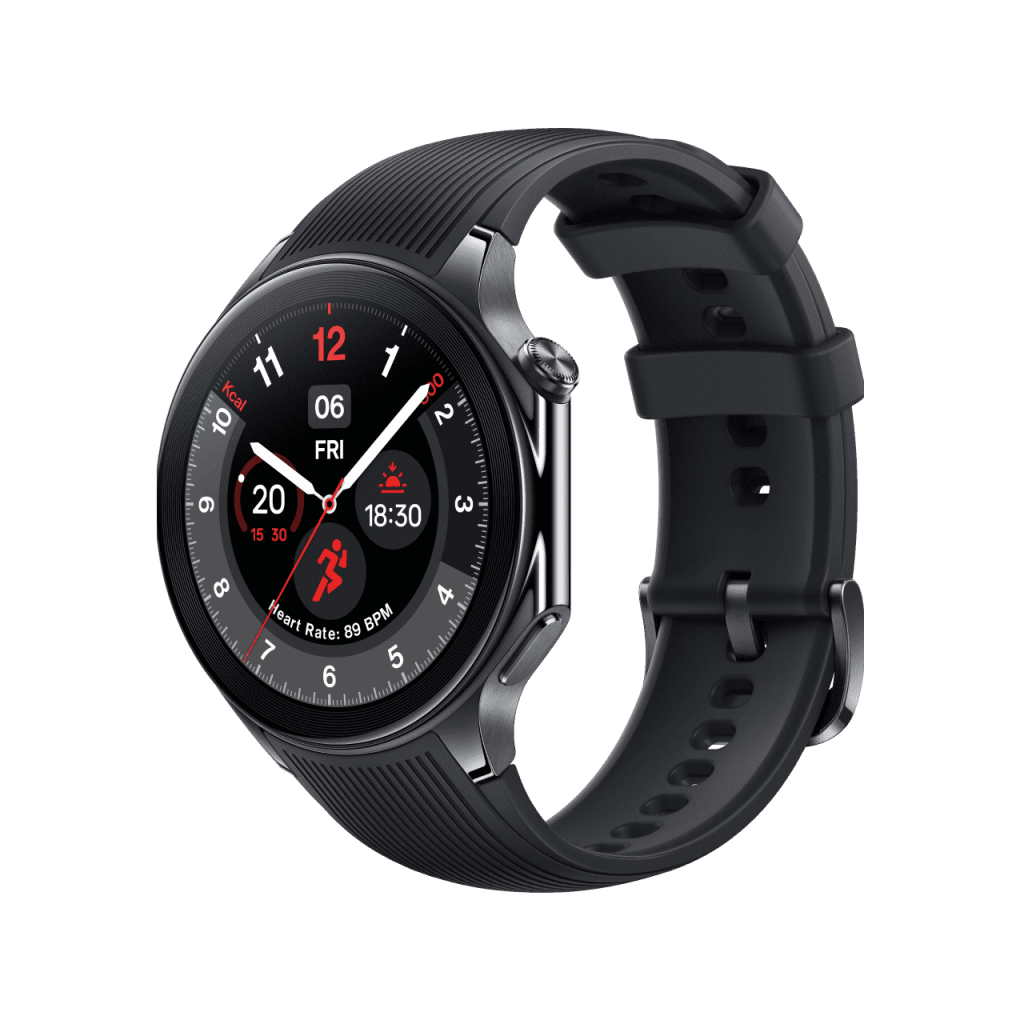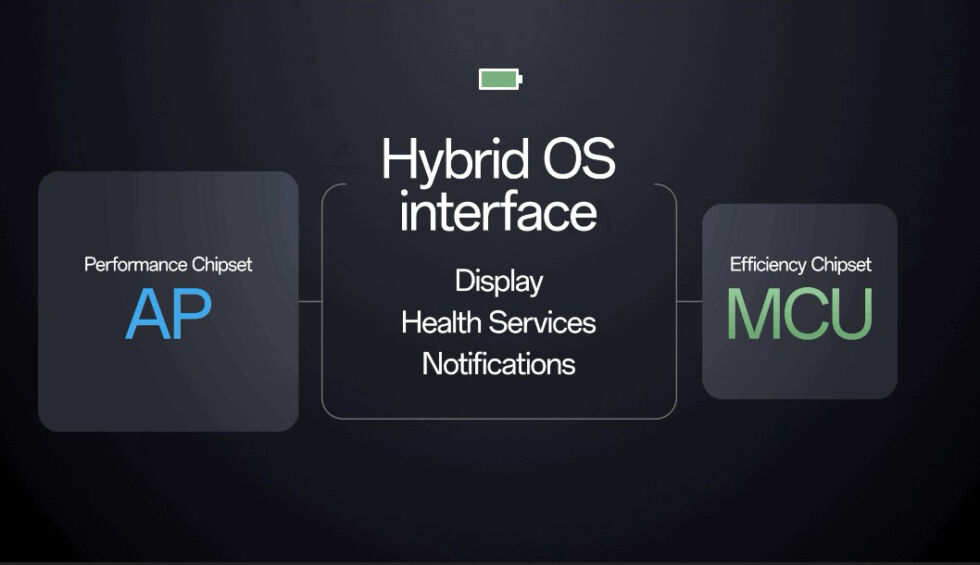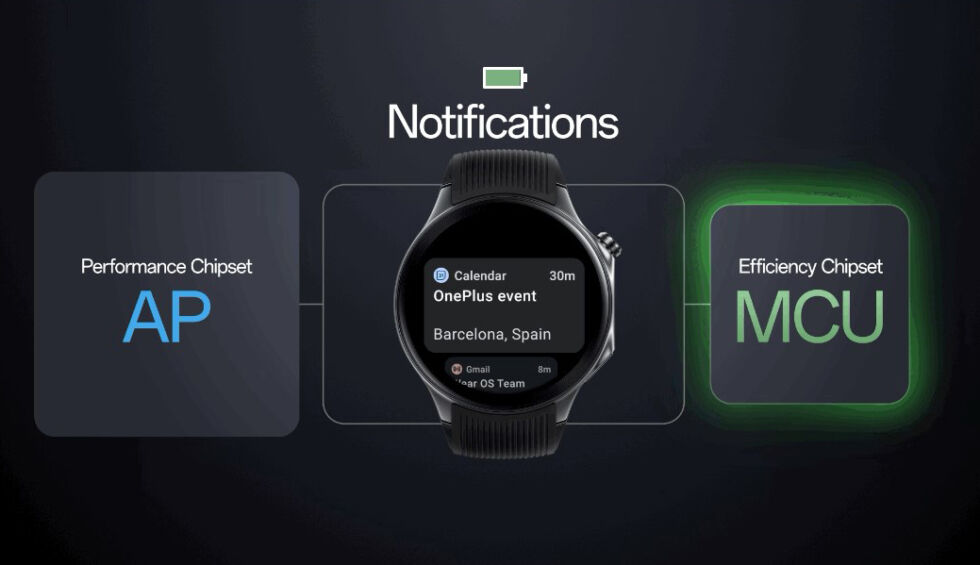Wear OS + Snapdragon uses too much power, so what if we just turned it off?

Smartwatches are capable little devices, but a big downside is that the battery doesn’t last that long. A smartphone-style smooth-scrolling UI usually leads to smartphone-style battery life, where you have to charge the watch every day or so. Simpler fitness devices with more minimal screens and UIs can last a lot longer, but what if there was a smartwatch that could attain the best of both worlds?
That’s the solution OnePlus and Google have cooked up, with the new “Wear OS hybrid interface” on the OnePlus Watch 2. Basically, the smartwatch is now packing two different sets of CPUs and OSes: One set is geared for low-power and is used for the always-on display, and a second set is for screen-on touch usage. OnePlus claims “market-leading battery life of up to 100 hours” in the OS-switching “smart mode,” though of course, how much you use the watch will make a huge difference.
Wear OS devices have been creeping up to this line for a while. Watches have long shipped with low-power “co-processors” either built right into the system-on-a-chip (SoC) or tacked on as an extra chip. The major step here is the extra OS, which allows the hardware to put Wear OS to sleep when you aren’t actively using the watch. Google isn’t very forthcoming in its blog post about manufacturers wanting to kick the power-hungry Wear OS to the curb, but OnePlus says the watch runs a real-time operating system (RTOS) when in its “efficiency” mode. On the OnePlus Watch 2, the chip layout is a Snapdragon W5 SoC that runs Wear OS, while the RTOS runs on a BES 2700 microcontroller unit (MCU) chipset.Advertisement

Wear OS and the RTOS can both run a “Hybrid OS interface” that just looks like bits of Wear OS. Google’s photos show the notification panel as part of this “hybrid OS interface.” When the screen is idle, you’re getting the efficient OS/chipset combo; the animation shows that when you tap the screen, it switches to Wear OS and Snapdragon in an apparently seamless transition.
Google says, “Bridged notifications will be delivered to the watch without waking up the high-performance AP. Users can read and dismiss these notifications while the watch is still powered by the MCU. The MCU can also handle wearable-specific actions in notifications, such as quick replies or remote actions.” “Bridged notifications” in Wear OS parlance means notifications from apps on your phone, which get sent over Bluetooth to the watch. That’s probably a big hint as to what is going on under the hood here. For a bridged notification, the phone is doing all the processing in terms of connectivity, and it just sends it to the watch. The MCU/RTOS side of the watch most likely has no support for Wear OS app ecosystem code and no Internet connectivity. The BES 2700 is usually used in Bluetooth headphones and certainly has no direct Internet access. It’s not known what any of this means for standalone Wear OS modes—if you were to go jogging and leave the phone at home, presumably the notification panel would have to be high-power, all the time.
OnePlus’ website has a detailed breakdown of the RTOS capabilities that will work in low-power mode. The always-on screen works on the low-power BES/RTOS mode, but only if you use a first-party watch face. Third-party watch faces will still run on the Snapdragon chip and Wear OS and drain a lot more power. Besides low-power notifications, you can use the quick settings panel, swipe through your first-party watchface to check tiles, start a workout through OnePlus’ app, and do sleep and heart rate detection, all without waking up Wear OS. OnePlus’ low-power watch hardware probably doesn’t run very well, since the fine print notes that if users turn on “animation booster” in the settings, Wear OS will instead take over all these duties.Advertisement

Google describes the development of this hybrid interface as a collaboration between it and OnePlus. You can see how OnePlus arrived at this solution. Three years ago, it made the OnePlus Watch 1, which only ran a familiar-sounding proprietary RTOS on top of a collection of low-power chips. Running a proprietary OS with zero apps led to the watch being widely panned, but the big upside of that limited power was a claimed 14-day battery life. OnePlus’ response for the sequel seems to have been to slap the usual Snapdragon + Wear OS combo on top of the low-power watch it already had, realign the RTOS with Wear OS more, and enable seamless switching.
As for the OnePlus Watch 2, it’s sporting a 2.5D sapphire crystal cover and stainless steel body with IP68 dust and water resistance. The watch band is rubber, but if you can find something else that fits the watch body, it’s removable with pins. The Snapdragon W5 SoC is paired with 2GB of RAM, 32GB of storage, and a big 500 mAh battery with 7.5 W quick charging. The RTOS lives on a separate 4GB EMMC. The display is a 1.43-inch 466×466 OLED. The watch supports NFC and Google Wallet payments, but there’s no cellular. The watch has two buttons on the right side, and while the top one looks like it would be a scrolling digital crown—and it does actually spin—it’s just a button.
The major downside to throwing hardware at the battery problem is that all that extra stuff takes up a lot of room. The watch measures 47.0×46.6×12.1 mm. The OnePlus Watch 2 ships in the US and Canada on March 4 for $299.99.
Listing image by OnePlus




